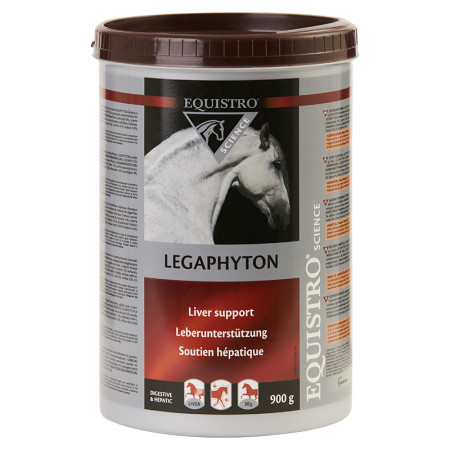
Hepatic function
The body’s factory
First, the liver synthetises numerous molecules like albumin and inflammation proteins. Albumin serves as a transporter for several substances in the blood. Inflammation proteins are part of the body’s immune system and help fight infection
The liver also plays a major role in the transformation of several hormones from their native, inactive form to their active form when needed.
Liver and digestion
The liver also synthetises bile, which pours in the small intestine through the bile duct. Bile emulsifies fats to facilitate their digestion.
Metabolism and storage
The liver plays an important role in sugar storage: when there is excess glucose in the blood (hyperglycemia) after a meal for example, the pancreas secretes insulin, which tells the liver to capture glucose, transform it into glycogen and store it for later use. This helps bring the glucose level in the blood (glycaemia) back to a normal level.
In the opposite situation, when glucose level in the blood is too low, the pancreas secretes glucagon which orders the liver to transform glycogen back into glucose and to release it into the blood stream.
The liver also plays a major role in transforming substrate molecules from one type to another: it can change carbohydrates and proteins into fat for energy storage. Alternatively, in case of prolonged fasting, it can change proteins into sugar to provide energy to organs like the brain, which is only able to use sugar to function.
The liver also stores numerous other substances like iron, copper and lipophilic vitamins (Vitamins A, D, E and K).
Filtration and detoxification
Once the food has been digested in the intestine, the small molecules of nutrients are absorbed into the blood stream and brought to the liver through the portal vein. The liver then proceeds with a detoxification by capturing and eliminating any toxic molecules.
The liver is also in charge of transforming and/or eliminating most drugs and old red and white blood cells. When red blood cells are destroyed in another part of the body (spleen, bone marrow or even in the blood stream in case of piroplasmosis infection for example), bilirubin is generated, which is toxic. Bilirubin is then captured by the liver and transformed into conjugated bilirubin that is non toxic and easily eliminated.
In the same way, the liver transforms ammoniac derived from protein metabolism into urea, which is non toxic and easily eliminated by the kidneys.
How to detect hepatic problems?
Liver failure is relatively rare. Seventy percent of the liver tissue has to be damaged before the liver fails to fulfil its important functions, resulting in the first clinical signs.
Moderate liver disease can thus not show any clinical sign. However, liver disease is quite frequent, due to the systemic exposition of the liver to food toxins.
Blood analysis can be very helpful in these cases. There are several blood markers to detect and evaluate the severity of hepatic damages. The most useful ones are aspartate-aminotransferase (AST or SGOT), gammaglutamyl-transferase (GGT), glutamate-deshydrogenase (GLDH), alanine-aminotransferase (ALT) and sorbitol-deshydrogenase (SDH). These markers increase in the blood when hepatic cells are damaged.
Other markers help evaluate liver function. The most useful ones are bile acids and conjugated bilirubin. Both increase in the blood when the liver does not play his role of elimination correctly.
These blood analyses enable us to detect a liver problem but not to identify its cause.
The veterinarian can then perform an ultrasonographic examination of the liver to detect potential abnormalities (such as a mass, an abnormal structure or liver stones). A liver biopsy may be performed: during this procedure a small piece of liver is collected using a long needle passed through the skin under ultrasound guidance. The biopsy is then sent to the laboratory for histology (observation of the cells) and bacteriology and viral analysis.
Clinical signs of liver failure
When a large portion of the liver is damaged and it cannot fulfil its biological functions anymore, clinical signs appear:
- weight loss, due to loss of metabolic functions
- jaundice , due to bilirubin accumulation in the blood
- ventral edema, due to low albumin in the blood
- neurologic signs like ataxia (incoordination) and blindness because the liver does not detoxifies the blood efficiently anymore
- colic
- reduced appetite
- photosensitisation
Liver diseases
Cholangiohepatitis
Cholangioheptatis is most commonly caused by a bacterial infection but can sometimes only involve severe inflammation (no bacteria) of the bile ducts. This obstructs the bile flow to the small intestine. In chronic cases, bile stones can form. Clinical signs are colic, fever spikes and jaundice. Treatment is often long and often includes antibiotics (if bacteria are involved) and non steroidal anti-inflammatory drugs (NSAID). Surgery might be needed to eliminate the bile stones.
Theiler’s disease
Theiler’s disease is an acute and severe liver disease that can occur after administration of equine-origin blood products (tetanus antitoxin, plasma or serum products). Clinical signs of liver failure appear quickly and the disease can be fatal. Aggressive treatment is important. If the horse survives, the liver can regenerate completely and the horse may have a complete recovery. The exact cause of Theiler’s disease is unknown but a virus is suspected.
Toxic plants
Most intoxications by plants are due to plants containing pyrrolyzidine alkaloids (PA), like ragwort. PA are transformed into toxic molecules in the liver. They induce death of liver cells and progressive fibrosis of the liver. A horse must eat about 2% of its body weight for the first signs of liver failure to appear. Toxicity is cumulative and signs can appear long after the horse is first exposed to the toxic plant. PA-containing plants tend to be bitter and horses normally avoid them unless there is no other food source or if they are baled in hay. Flowers and grains are the most toxic parts.
When clinical signs appear, damage to liver cells is already serious and the prognosis is poor as the liver cannot regenerate once fibrosis is present.
Therefore, it can be useful to check hepatic markers in the blood regularly.
Treatment of hepatic diseases
Treatment must be adapted to the cause of the disease. In case of cholangiohepatitis, antibiotics (based on analysis results) and NSAID may be used. In case of intoxication, the horse should be promptly isolated from the toxic plant.
If signs of liver failure are present, aggressive treatment should be instituted including intravenous fluids, and drugs to limit production of ammoniac in the gut: since the liver is no longer able to transform it into urea, ammoniac builds up in the blood and contributes to the development of neurologic signs.
Conclusion
The liver is an extremely complex organ with numerous biological functions. However, clinical signs appear late in the disease process and prognosis is then poor. A regular follow-up of the hepatic markers in blood enables the veterinarian to detect a problem early in the process and to react quickly.
Dr. med. vet. Julie Dauvillier





